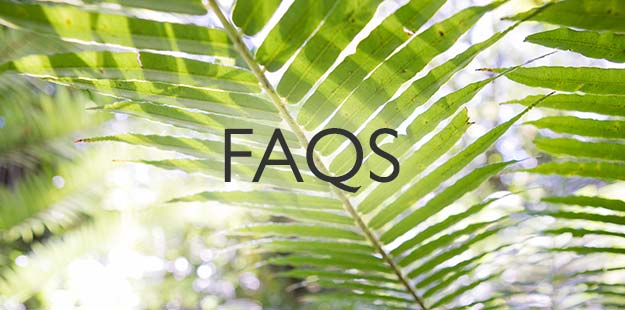NONI – Indian Mulberry
The Hawaiian Noni fruit, scientifically known as Morinda citrifolia L. and belonging to the Rubiaceae family, which is part of the Coffee Family, is the stinky fruit some run from and others bow down to. Enjoy these fun facts about the Noni Tree in Hawaii.
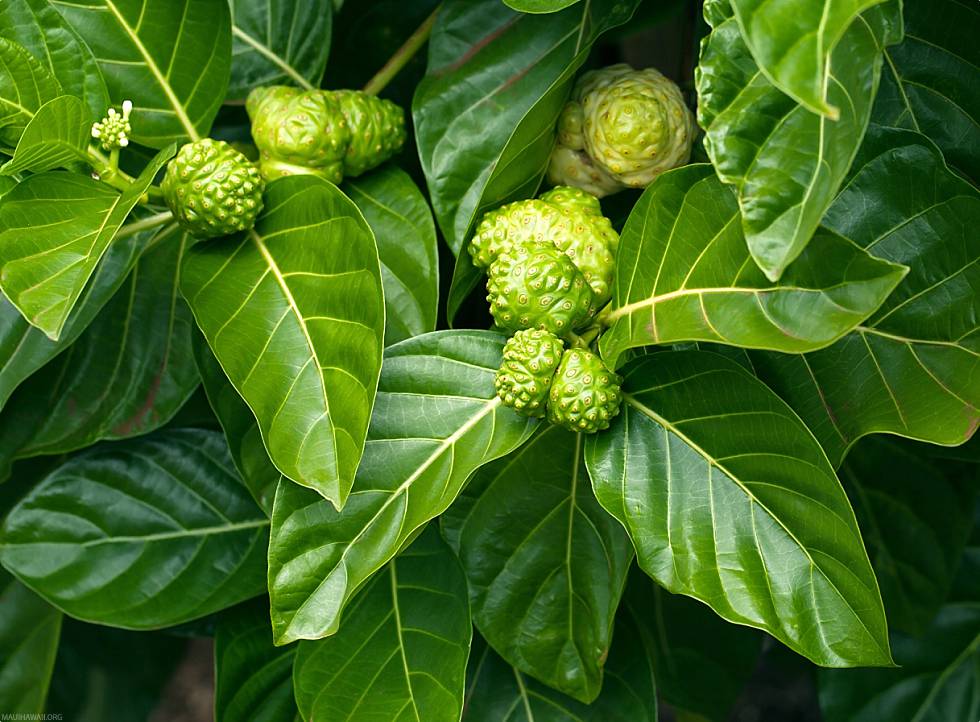
About The Hawaiian Noni
Noni is a small tree growing in open lowlands often on lava beds at the edge of forests. The leaves of noni are large, shiny, and oval and are borne in opposite pairs along the stem. Noni bears a small, pale yellow-white fruit with a distinctive odor when ripe. The unpleasant taste of noni is a reminder of why it was a famine food in old times.
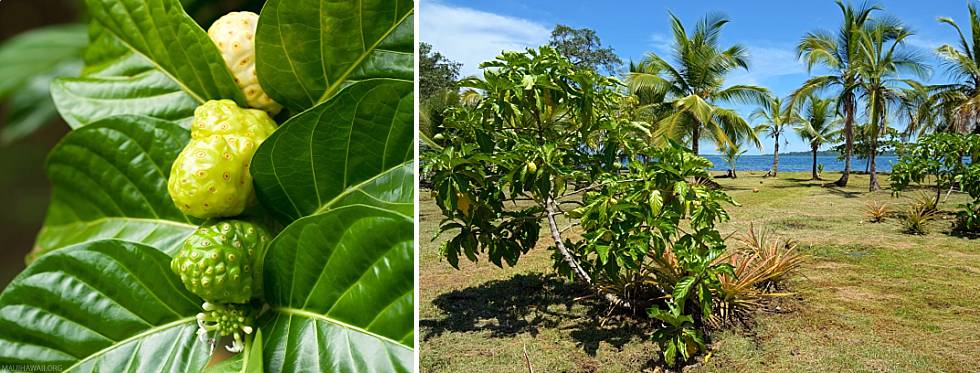
Noni is often used medicinally as a poultice to bring a boil to a head and the crushed leaves with the fruit are helpful for bruises, wounds, and other sores on the skin. When mixed with other plants the combined remedy is good for treating constipation and stomach ailments or prevention of infection. If you get a case of the “ukus” (head lice), the juice from the noni will rid them. A second wash with coconut shampoo afterward is recommended.
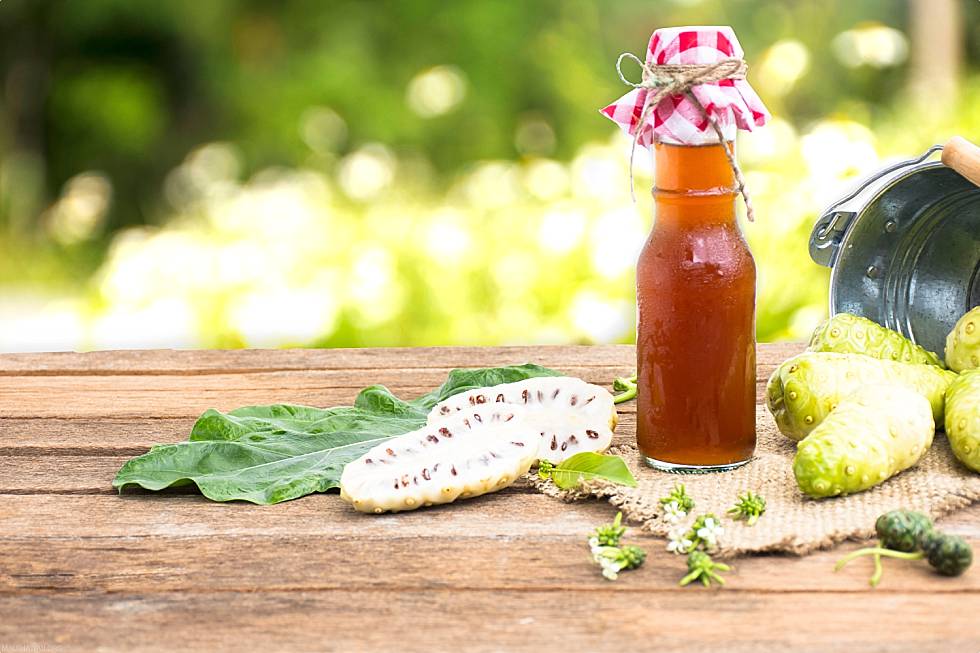
A range of dyes can be extracted from boiled noni root when mixed with lime from burnt coral. Depending on the recipe, red, yellow, and other colors can be concocted.
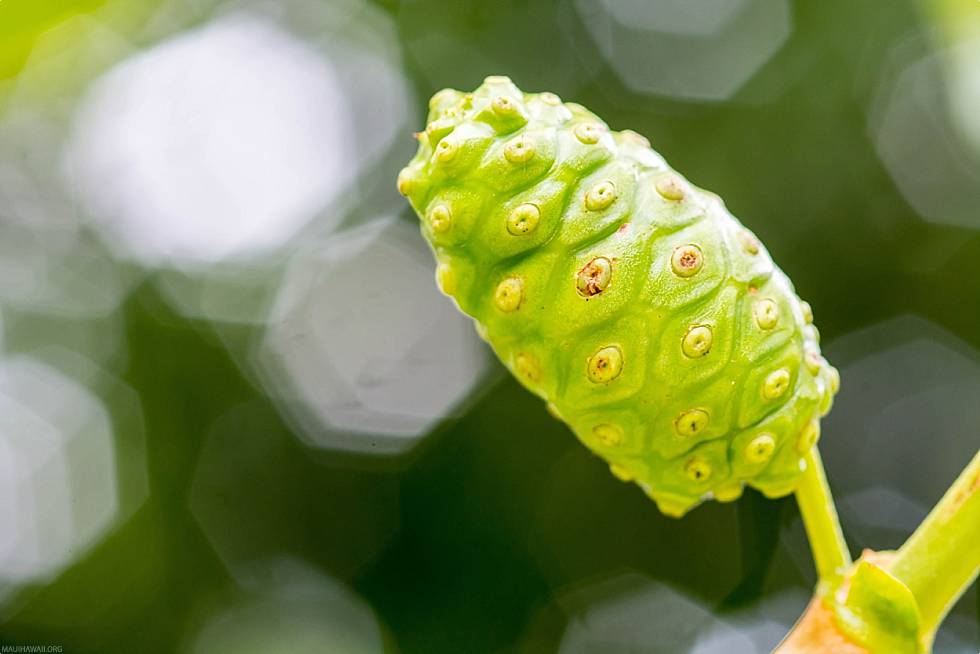
When Kamapuaʻa (the rascal pig-god), who had a love/hate relationship with Pele (the goddess of the fire pit), was taunting her, he chanted, “I have seen the women gathering noni, scratching noni, pounding noni.” Pele heard this and believed that Kamapua’a was saying that she had red eyes and a foul smell.
This so angered her that she plunged into battle with him.
Mahalo to Kahanu Garden in Hana, Maui for the lessons and insight into all these wonderful plants.







